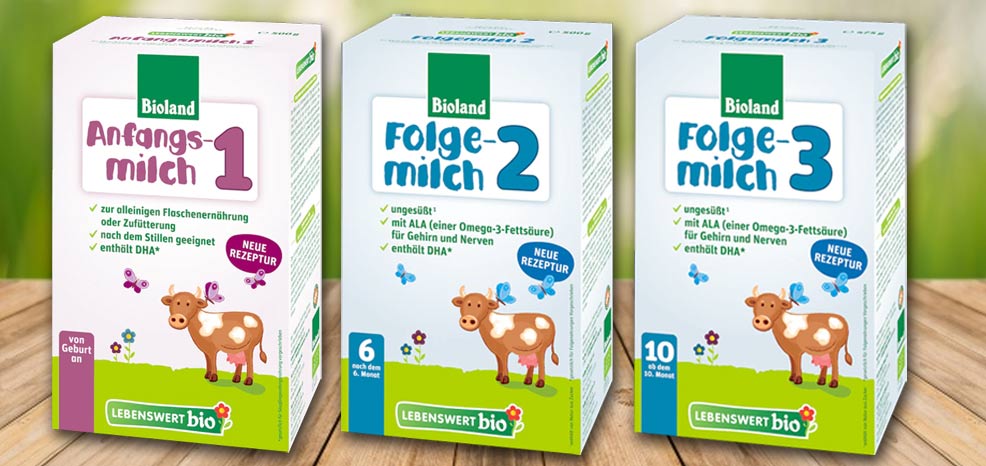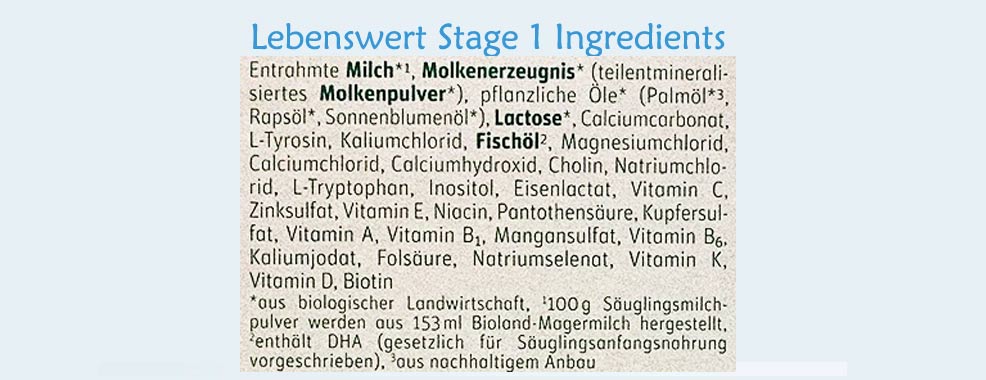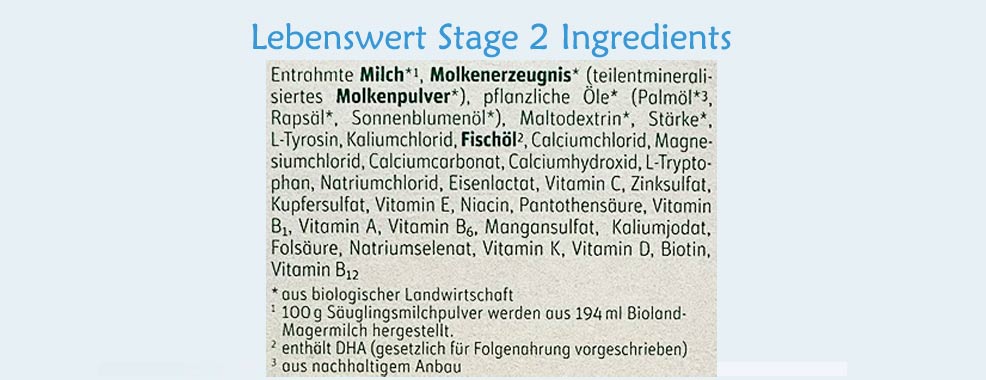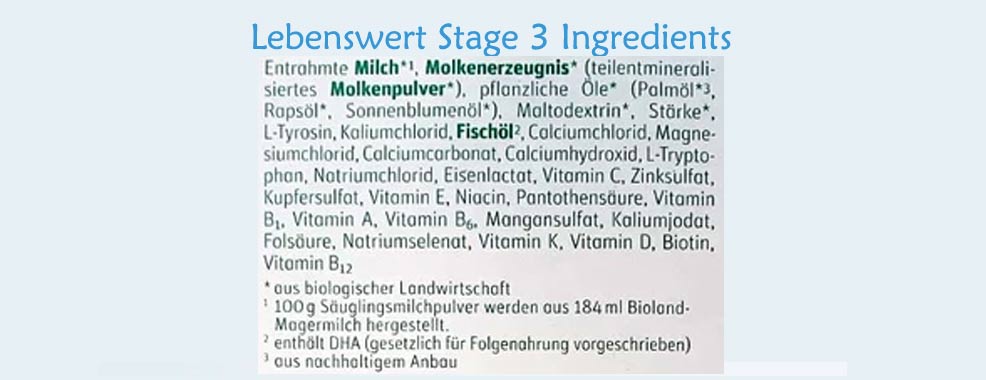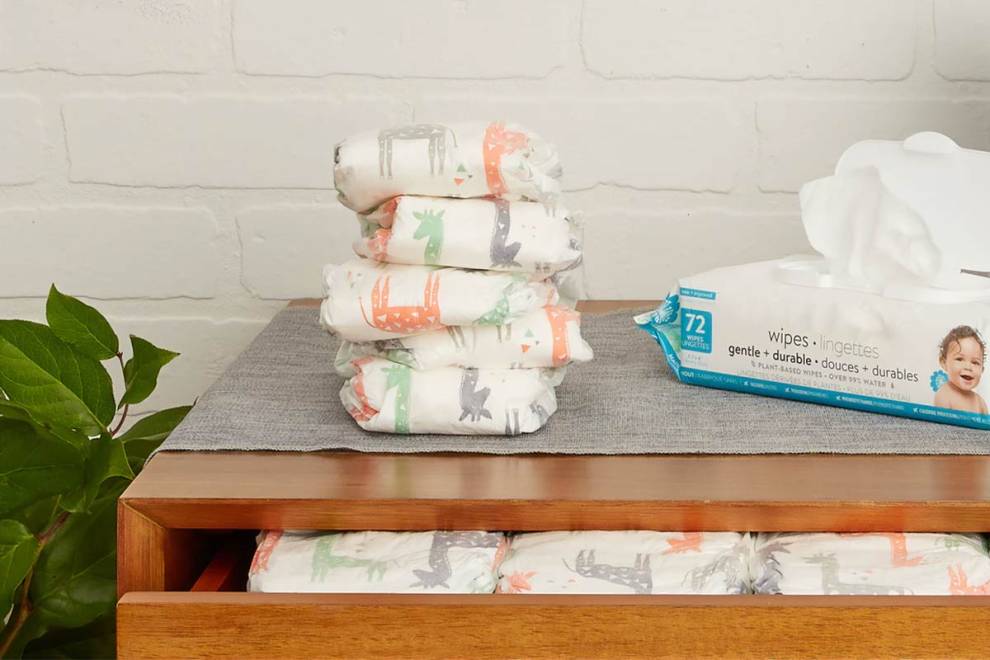Is it Lebens-worth the cost? Here's the inside scoop on this organic baby formula.
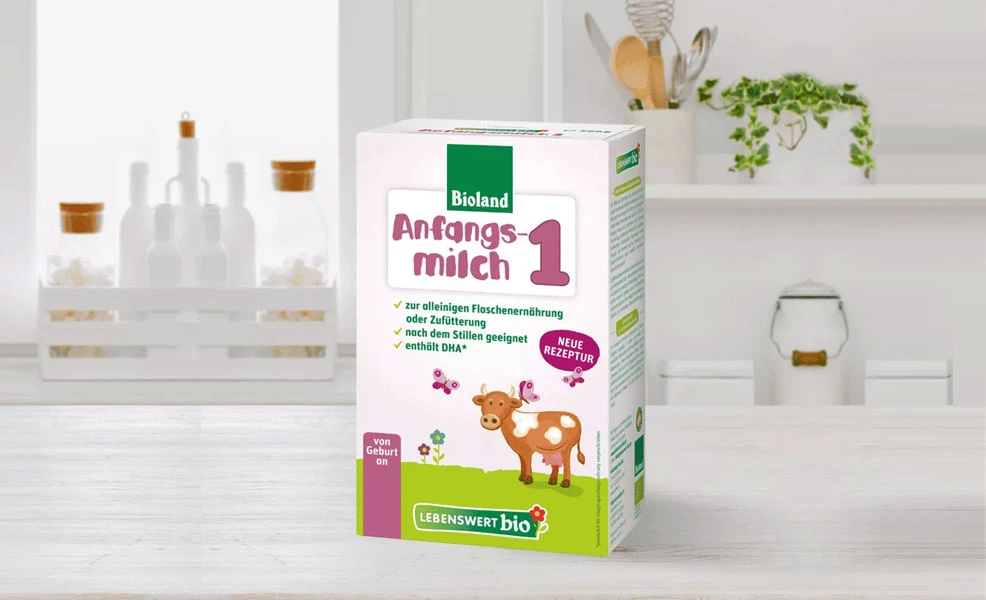
Mommyhood101 independently tests and curates baby gear to help you make informed decisions. If you buy products through links on our site, we may earn a commission.
Lebenswert organic formulas were introduced in 2009 by the biggest and most popular European baby formula company, Holle.
While they produce most of their infant formulas in Germany, Lebenswert is made in Austria using high-quality, Bioland-certified organic ingredients.
In our review of Lebenswert infant formulas, we consulted with a developmental nutritionist, tested the formula ourselves and on four infants, analyzed the ingredients and nutritional contents relative to United States (USDA) recommendations, and reached some conclusions regarding the use of Lebenswert Bio formulas. Remember to always ask your child's pediatrician before changing their formula.
Spoiler alert, we are moderately happy with the results of our testing and think they will likely improve over the next few months given new EU nutritional regulations. As of 2021, we are now a bit more excited about what Lebenswert offers, including Omega-3 and Omega-6 fatty acids, in accordance with new EU regulations.
We're keeping Lebenswert on our list of the best organic baby formulas because it definitely offers some excellent bang for the buck, high quality, and great acceptance and tolerability by infants.
-
- Lebenswert Comparison Table
- Take-Home Message
- Some Translations to Know
- Lebenswert Farming Practices
- EU Organic Farming
- Bioland Farming
- Lebenswert Ingredients
- Lebenswert Stage 1 Ingredients
- Lebenswert Stage 2 Ingredients
- Lebenswert Stage 3 Ingredients
- Lebenswert Stages: Ingredient Differences
- Lebenswert Nutritional Analysis
- USDA Formula Recommendations
- Lebenswert Stage 1 Nutrition
- Lebenswert Stage 2 Nutrition
- Lebenswert Stage 3 Nutrition
- Lebenswert Testing in Infants
- Conclusions
- Where to Buy Lebenswert
- References Cited
Lebenswert Formula Review
Most people don't want to read this entire article to see what we found. So here is the summary of what we loved, and what we didn't.
✔️ High-quality organic formulation.
✔️ Bioland-certified organic milk.
✔️ Nutrition near FDA & USDA guidelines.
✔️ First ingredient is skim milk.
✔️ Nothing artificial.
✔️ No Maltodextrin in Stage 1.
✔️ No sucrose or corn syrups.
✔️ Gluten & soy-free.
✔️ High infant acceptance, good taste.
✔️ No gas, indigestion, or constipation.
✔️ Omega-3 (DHA, ALA) in all Stages.
✔️ Omega-6 (LA) in all Stages.
❌ Maltodextrin in Stages 2-3.
❌ Starch in Stages 2-3.
❌ Palm Oil as a fat source.
Some Translations
Since the Lebenswert packaging is in German, here are a few important translations. First, just for fun, Lebenswert means "worth living" or "livable."
Bio: This means Organic in German, and the EU and Germany take Organic standards very seriously. More on that later.
Anfangsmilch: This means Starting Milk in German, meaning that it is intended to be used from birth onward (usually up to 6 months).
Folgemilch: This means Follow-On Milk in German, meaning that it is intended to be used from 6 months onward (nach dem 6 monat).
Best Practices?
Lebenswert is made by Holle but does not conform to the same esoteric standards of Demeter-certified biodynamic farming as Holle formulas. Instead, Lebenswert uses organic milk sourced from dairy farms in Germany and Austria (and throughout the EU) that conform to Bioland organic farming regulations.
This leads to some misleading marketing on websites selling European formulas, which will claim that Lebenswert baby formula is made in Germany and Bioland certified. Lebenswert is actually made in Austria, and Bioland certification of a product requires that 100% of ingredients are certified organic.

Lebenswert formulas are not 100% organic (they meet the EU 98% requirement), and we do not believe they are Bioland certified themselves. That said, they do source milk products (skim milk, whey, and lactose) from Bioland-certified farms.
What are the EU's organic regulations?
The European Union (EU) has a strict system of organic controls that are enforced through an annual inspection process. These inspections result in an annual certificate being issued for conforming products.
While Lebenswert is made in Austria and their parent company (Holle) is based in Switzerland, they conform to EU organic standards. Here are the specific organic regulatory criteria:
- No protecting plants by using synthetic chemicals such as herbicides or pesticides.
- No use of soluble mineral fertilizers.
- No application of chemical growth regulators.
- Feeding animals with farm-grown feed, not purchased feed, when possible.
- No use of antibiotics other than to treat an infection.
Overall, to use the EU-certified organic label, products must meet a stringent 98% organic content (by weight). By comparison, the United States USDA organic certification process has a 95% minimum.
What is a Bioland farm?
Bioland farming involves very strict organic practices that exceed EU requirements, and are routinely inspected and enforced.
These include the farm needing to be 100% organic, only producing organic foods. It also includes requirements for the minimum amount of space for livestock grazing, restrictions on fertilizers and pesticides, and no genetically modified seeds allowed.
For a product to be Bioland certified, it must have 100% of its ingredients sourced from a Bioland farm.
Ingredients in Lebenswert Formulas
The use of Bioland organic milk products will provide some relatively intangible benefits for the quality of Lebenswert infant formulas. These benefits do not appear on an ingredient label and include minimal trace pesticides, herbicides, antibiotics, or heavy metals.
Here are the ingredients in each of the Lebenswert baby formulas:
Lebenswert Stage 1 Ingredients (translated): Organic Skim Milk, Organic Whey Powder (Partially Demineralized), Organic Vegetable Oils [Organic Palm Oil, Organic Rapeseed Oil, Organic Sunflower Oil], Organic Lactose, Calcium Carbonate, L-tyrosine, Potassium Chloride, Fish Oil, Magnesium Chloride, Calcium Chloride, Calcium Hydroxide, Choline, Sodium Chloride, L-tryptophan, Inositol, Iron Lactate, Vitamin C, Zinc Sulfate, Vitamin E, Niacin, Calcium Pantothenate, Vitamin E, Zinc Sulfate, Niacin, Pantothenic Acid (Vitamin B5), Copper Sulfate, Vitamin A, Vitamin B1, Manganese Sulfate, Vitamin B6, Potassium Iodate, Folic Acid, Sodium Selenate, Vitamin K, Vitamin D, Biotin.
Lebenswert Stage 2 Ingredients (translated): Organic Skim Milk, Organic Whey Powder (Partially Demineralized), Organic Vegetable Oils [Organic Palm Oil, Organic Rapeseed Oil, Organic Sunflower Oil], Maltodextrin, Starch, L-Tyrosine, Potassium Chloride, Fish Oil, Calcium Chloride, Magnesium Chloride, Calcium Carbonate, Calcium Hydroxide, L-tryptophan, Sodium Chloride, Iron Lactate, Vitamin C, Zinc Sulfate, Copper Sulfate, Vitamin E, Niacin, Calcium Pantothenate, Vitamin B1, Vitamin A, Vitamin B6, Manganese Sulfate, Potassium Iodate, Folic Acid, Sodium Selenate, Vitamin K, Vitamin D, Biotin, Vitamin B12.
Lebenswert Stage 3 Ingredients (translated): Organic Skim Milk, Organic Whey Powder (Partially Demineralized), Organic Vegetable Oils [Organic Palm Oil, Organic Rapeseed Oil, Organic Sunflower Oil], Maltodextrin, Starch, L-Tyrosine, Potassium Chloride, Fish Oil, Calcium Chloride, Magnesium Chloride, Calcium Carbonate, Calcium Hydroxide, L-tryptophan, Sodium Chloride, Iron Lactate, Vitamin C, Zinc Sulfate, Copper Sulfate, Vitamin E, Niacin, Calcium Pantothenate, Vitamin B1, Vitamin A, Vitamin B6, Manganese Sulfate, Potassium Iodate, Folic Acid, Sodium Selenate, Vitamin K, Vitamin D, Biotin, Vitamin B12.
Here are some ingredients that are not in any of the stages of Lebenswert Bio: corn syrup, corn syrup solids, artificial colors, flavors, or preservatives, sucrose, soy, genetically modified organisms (GMOs), carrageenan, or high fructose corn syrup.
Some ingredients we didn't appreciate: Maltodextrin as a thickening carbohydrate is present in Stages 2 and 3, starch is added in Stage 3, and palm oil is included in the Pre and all stages. Also, as of two years ago, all stages include fish oil to add Omega-3 fatty acids, but Lebenswert also added starch to Stages 2 and 3. This was an unfortunate addition!
Ingredient Differences Across Stages
1. Lebenswert Stage 1 versus Stage 2: There are two main differences between Lebenswert Stages 1 and 2. Stage 1 uses lactose as its primary carbohydrate source (like breast milk), whereas Stage 2 uses maltodextrin and starch. Maltodextrin and starch are not the ideal carbohydrates, and when they are used we prefer them to be used in conjunction with lactose (learn how this is done in our reviews of the Holle formulas). Stage 1 is intended for use from birth onward, and Stage 2 is for 6+ months.
2. Lebenswert Stage 2 versus Stage 3: As of 2021, there are no fundamental ingredient differences between Lebenswert Stages 2 and 3. If you peruse the labels above, you'll notice they are identical; however, the proportions are a bit different, with Stage 3 having slightly lower fat and higher carbohydrates than Stage 2.
Nutritional Analysis
To gather insights into whether Lebenswert meets stringent US nutritional recommendations by the US Department of Agriculture (USDA) and the American Academy of Pediatrics, we gathered insights from a dietitian nutritionist with expertise in infant feeding. In addition to offering us guidance, he also directed us to the USDA's published recommendations (see References).
Note that the US FDA also publishes minimum infant formula nutritional requirements (see references), but all of the infant formulas we reviewed met these published standards, and they are only relevant for 0-6 months. Because the Lebenswert formulas appear to come close to the FDA minimum requirements (according to our review), we compared them to the more general USDA daily intake recommendations.
The USDA does not publish recommended daily allowances (RDAs) for infants between 0-6 months. Instead, they publish information about Adequate Intakes (AI), which are used when there is not enough evidence to make a formal RDA. The AI is set at a level assumed to provide nutritional adequacy.
Here are the USDA's AIs (per day) for infants aged 0-6 months, and 6-12 months. Units are grams (g), milligrams (mg), and micrograms (μg).
USDA Nutritional Recommendations:
| Carbohydrates | 0-6mo: 60g | 6-12mo: 95g |
| Proteins | 0-6mo: 9.1g | 6-12mo: 11g |
| Fats | 0-6mo: 31g | 6-12mo: 30g |
| Omega-3 | 0-6mo: 0.5g | 6-12mo: 0.5g |
| Omega-6 | 0-6mo: 4.4g | 6-12mo: 4.6g |
| Vitamin A | 0-6mo: 400μg | 6-12mo: 500μg |
| Vitamin B1 | 0-6mo: 0.2mg | 6-12mo: 0.3mg |
| Vitamin B2 | 0-6mo: 0.3mg | 6-12mo: 0.4mg |
| Vitamin B6 | 0-6mo: 0.1mg | 6-12mo: 0.3mg |
| Vitamin B12 | 0-6mo: 0.4μg | 6-12mo: 0.5μg |
| Vitamin C | 0-6mo: 40mg | 6-12mo: 50mg |
| Vitamin D | 0-6mo: 5μg | 6-12mo: 5μg |
| Vitamin E | 0-6mo: 4mg | 6-12mo: 5mg |
| Vitamin K | 0-6mo: 2μg | 6-12mo: 2.5μg |
| Folate | 0-6mo: 65μg | 6-12mo: 80μg |
| Niacin | 0-6mo: 2mg | 6-12mo: 4mg |
| Calcium | 0-6mo: 210mg | 6-12mo: 270mg |
| Iron | 0-6mo: 0.27mg | 6-12mo: 11mg |
Given that the Stage 1 Lebenswert formula is intended for use from birth to 6 months, we evaluated its nutritional content against the USDA 0-6 month recommendations. For the Stage 2 and 3 versions, we evaluated against the USDA 6-12 month recommendations.
Because the USDA recommendations are for daily intake, we considered the daily intake recommended by Lebenswert in their "Meal Tables." Stage 1 suggests an average of about 100 grams of formula per day for the first 6 months; of course, this is lower (about 80 grams) for the first month, then increases with age to over 100g/day.
To derive an estimate of how many nutrients a baby would receive each day when using Lebenswert, we used the average recommended serving for the first 6 months (about 100 grams of formula per day). This will overestimate nutrients in the early months, and underestimate them in later months. As you will see from our analysis, this isn't causing much concern.
Does Lebenswert Stage 1 Meet USDA Nutritional Recommendations?
In general, yes, very similar to US-made baby formulas. Here is a table comparing the USDA recommendation for 0-6 months to what the Lebenswert Stage 1 provides (in 100g of formula):
| Carbohydrates | USDA: 60g | Stage 1: 56.1g |
| Proteins | USDA: 9.1g | Stage 1: 10.2g |
| Fats | USDA: 31g | Stage 1: 27.1g |
| Omega-3 | USDA: 0.5g | Stage 1: 0.48g |
| Omega-6 | USDA: 4.4g | Stage 1: 4.2g |
| Vitamin A | USDA: 400μg | Stage 1: 392μg |
| Vitamin B1 | USDA: 0.2mg | Stage 1: 0.61mg |
| Vitamin B2 | USDA: 0.3mg | Stage 1: 1.5mg |
| Vitamin B6 | USDA: 0.1mg | Stage 1: 0.43mg |
| Vitamin B12 | USDA: 0.4μg | Stage 1: 0.9μg |
| Vitamin C | USDA: 40mg | Stage 1: 58mg |
| Vitamin D | USDA: 5μg | Stage 1: 12μg |
| Vitamin E | USDA: 4mg | Stage 1: 11mg |
| Vitamin K | USDA: 2μg | Stage 1: 61μg |
| Folate | USDA: 65μg | Stage 1: 175μg |
| Niacin | USDA: 2mg | Stage 1: 3.2mg |
| Calcium | USDA: 210mg | Stage 1: 497mg |
| Iron | USDA: 0.27mg | Stage 1: 4.5mg |
Notice how close all of those numbers are to each other. The fat and carbohydrates are a bit low relative to USDA guidelines, but the proteins are a bit high. USDA guidance for fat is 31g per day, which precisely matches how much fat is in breast milk (about 4.2g per 100mL, or 30.8g per 100g).
While the fat is a bit low, the protein is a bit higher than both USDA guidance and what is found in breast milk. The relatively high protein and lower fat and carbohydrate are typical for European baby formulas.
We compared the Lebenswert Stage 1 nutritional profile with the most popular Similac and Enfamil formulas. Those are very similar to Lebenswert, usually around 27g of fat per 100g of formula.
In other words, Lebenswert Stage 1 provides an overall nutritional profile that is similar to the major American baby formula brands, though it is a bit light on the fat and carbohydrate content but compensates with higher protein content. As of 2021, all Lebenswert formulas contain Omega-3 (DHA, ALA) and Omega-6 (LA) fatty acids.
Does Lebenswert Stage 2 Meet USDA Nutritional Recommendations?
In general, yes, but with some exceptions. Here is a table comparing the USDA recommendation for 6-12 months to what the Lebenswert Stage 2 provides (in 100g of formula):
| Carbohydrates | USDA: 95g | Stage 2: 82.6g |
| Proteins | USDA: 11g | Stage 2: 10.2g |
| Fats | USDA: 30g | Stage 2: 25.5g |
| Omega-3 | USDA: 0.5g | Stage 2: 0.44g |
| Omega-6 | USDA: 4.6g | Stage 2: 3.9g |
| Vitamin A | USDA: 500μg | Stage 2: 405μg |
| Vitamin B1 | USDA: 0.3mg | Stage 2: 0.7mg |
| Vitamin B2 | USDA: 0.4mg | Stage 2: 1.1mg |
| Vitamin B6 | USDA: 0.3mg | Stage 2: 0.48mg |
| Vitamin B12 | USDA: 0.5μg | Stage 2: 1.0μg |
| Vitamin C | USDA: 50mg | Stage 2: 70mg |
| Vitamin D | USDA: 5μg | Stage 2: 13μg |
| Vitamin E | USDA: 5mg | Stage 2: 9.1mg |
| Vitamin K | USDA: 2.5μg | Stage 2: 45μg |
| Folate | USDA: 80μg | Stage 2: 177μg |
| Niacin | USDA: 4mg | Stage 2: 3.9mg |
| Calcium | USDA: 270mg | Stage 2: 405mg |
| Iron | USDA: 11mg | Stage 2: 7.3mg |
Similar to Stage 1, Stage 2 is low in fat and carbohydrates, but it's also a bit low in protein.
Of course, this analysis is based on 100 grams per day of powdered formula and does not consider the fact that you'll likely be supplementing formula with first foods (like rice cereal).
Also, if your child's intake is higher than 100 grams per day, like at 120g/day (which is likely), they will obviously receive more nutrition (20% more). And with 20% more, the Lebenswert Stage 2 formula reaches USDA recommendations across the board.
Does Lebenswert Stage 3 Meet USDA Nutritional Recommendations?
In general, yes, but with some exceptions. Here is a table comparing the USDA recommendation for 6-12 months to what the Lebenswert Stage 3 provides (in 100g of formula):
| Carbohydrates | USDA: 95g | Stage 3: 84g |
| Proteins | USDA: 11g | Stage 3: 10.2g |
| Fats | USDA: 30g | Stage 3: 24.0g |
| Omega-3 | USDA: 0.5g | Stage 3: 0.42g |
| Omega-6 | USDA: 4.6g | Stage 3: 3.7g |
| Vitamin A | USDA: 500μg | Stage 3: 353μg |
| Vitamin B1 | USDA: 0.3mg | Stage 3: 0.67mg |
| Vitamin B2 | USDA: 0.4mg | Stage 3: 1.1mg |
| Vitamin B6 | USDA: 0.3mg | Stage 3: 0.55mg |
| Vitamin B12 | USDA: 0.5μg | Stage 3: 1.0μg |
| Vitamin C | USDA: 50mg | Stage 3: 70mg |
| Vitamin D | USDA: 5μg | Stage 3: 13μg |
| Vitamin E | USDA: 5mg | Stage 3: 8.5mg |
| Vitamin K | USDA: 2.5μg | Stage 3: 40μg |
| Folate | USDA: 80μg | Stage 3: 167μg |
| Niacin | USDA: 4mg | Stage 3: 3.7mg |
| Calcium | USDA: 270mg | Stage 3: 389mg |
| Iron | USDA: 11mg | Stage 3: 6.9mg |
In terms of macronutrients (proteins, fats, carbohydrates), you'll notice that your growing baby will need more than the 100g/day serving (nearly 30% more!). The micronutrient content, however, is closer to USDA recommendations.
In 2020, the EU passed (well, it was passed in 2016, but enforcement started in February 2020) a requirement that baby formulas include Omega-3, and this is a new addition to the Lebenswert formulas. At this point, all stock of the old Lebenswert (which did not have fish oil) should have sold, and any new purchases should be shipping the updated version.

While the nutritional content of Lebenswert Stage 3 seems low relative to USDA guidelines, it is important to realize that once a baby reaches 6+ months, two things will likely occur. First, your baby will be consuming more than 100 grams per day of powdered formula (or 750mL per day of mixed formula).
Second, most parents begin to introduce solid foods in addition to formula or breastfeeding. These usually first include rice and/or oatmeal cereals and then progress to fruit and vegetable purees. These will complement the nutrition found solely in the formula, including additional iron and carbohydrates.
Some parents might be interested to learn that Lebenswert formulas contain trace levels of fluoride. This is not added by the manufacturer but appears in trace amounts (0.04mg per 100g, or 0.005 per 100mL) due to the water used during manufacturing. This is equivalent to about 0.05 mg of fluoride in a liter of prepared formula, which is much less than found in bottled water (about 0.4mg per liter), and way less than found in fluoridated tap water (about 5mg per liter).
Testing Lebenswert in Infants
We tested Stage 1, Stage 2, and Stage 3 varieties in four infants, one aged 2 months (Stage 1), one 6 months (Stage 2), and two 10 months (Stage 3).
Mixing and Taste-Testing
The first thing we noticed is that the Lebenswert formulas were not clumpy or bubbly during or after mixing. They did a nice job blending easily with water, and any bubbles settled quickly.
It is not thick and creamy in taste or texture, unlike Holle. See our Holle vs. Lebenswert formula comparison here! Lebenswert has a consistency and taste that is a bit more like breastmilk, making it a thinner and better-flowing formula (through slow-flow nipples).
When we used a tiny bit of formula to fortify breastmilk (only if your doctor says so!), it mixed very nicely.
Safety First: Never prepare powdered formula with anything but water. If you're interested in fortifying your breast milk with formula you must ask your doctor for guidance first, as this can be very dangerous for your baby.
Feeding with Lebenswert
Three of the four test babies took the Lebenswert formula without any difficulties. Interestingly, the babies who tried the Stage 1 and 2 varieties all took it without any issues.
But Stage 3 was accepted in one but not the other. Tasting it ourselves, the "supertaster" in our group suggested he could taste a fishy flavor. It's unclear whether this is what led to the rejection by one of the babies, but it's worth mentioning. Of course, any baby formula using fish oil for DHA runs the risk of having a bit of a fishy flavor, so that shouldn't be surprising.
None of the babies developed any noticeable gas relative to their usual post-feeding burps or spit-up. The same goes for constipation and bowel movements, which the parents reported proceeded as usual after feeding a few times with Lebenswert formulas. Note that no parents switched to Lebenswert after trying it out, which is unlike what happened when we tested Holle formulas.
Conclusions
We have featured Lebenswert in our best organic baby formulas list for several years now, but we were excited to do an updated and more thorough review of all three stages of Lebenswert formulas.
Overall, we're excited by several aspects of Lebenswert, including their use of Bioland organic milk products (whey, lactose, skim milk), their relatively accessible price point (versus HiPP Combiotik formula or Holle formula), and their simple ingredients profile. This includes the fact that lactose is used as the primary carbohydrate source in Stage 1, rather than maltodextrin or food starch.
We weren't very excited by the use of maltodextrin (Stages 2-3) and starch (Stages 2-3). For parents looking for a low-lactose baby formula, this makes Stage 2 Lebenswert a good option for infants over 6 months of age.
Lebenswert is also one of the few baby formula companies that omitted Omega-3 and Omega-6 fatty acids from their formulations until the EU passed legislation to require at least DHA (Omega-3) in all baby formulas intended for use from 0-12 months. This new addition brings Lebenswert formulas closer to USDA recommendations for infant nutrition, particularly for fat content. Note that fish oil is a much better DHA source than synthetic Omegas extracted and processed using Hexane.
Overall, the nutritional profile of Lebenswert was a little weak in fat content, though other macronutrients (carbohydrates, proteins) and micronutrients (vitamins, minerals) were at good levels relative to US guidelines.
In terms of mixing, taste, and acceptance, the Lebenswert formulas were surprisingly similar to breastmilk, and overall acceptance rates were very high.
Expensive? Yes. All baby formula is expensive, and Lebenswert and other European formula brands are among the most expensive on the market. Lebenswert tends to be a bit less expensive than Holle, likely because milk products are not being sourced exclusively from Biodynamic (Demeter) farms, which can get costly.
Overall, we think Lebenswert is a great option for parents looking for an organic baby formula that conforms to the stringent EU organic requirements, though they might consider supplementing with breastmilk and DHA.
Where to Buy Lebenswert?
Over the past 10+ years of operating Mommyhood101, we have worked with several companies that import European baby formulas to the United States.
Most of the companies have come and gone, some were pushed out by new FDA labeling requirements for European formulas, and some couldn't maintain their supply chain logistics and tended to ship expired or poorly handled formulas.
One of the most reliable retailers of European baby formulas that ships to the US is Organic Life Start, which sells a huge variety of formulas to US customers and tends to have the best prices. Not only that, but they have free and super fast shipping, and keep their formulas in stock for immediate shipping!
References Cited
German Organic Farming Regulations
Consulting Dietitian Nutritionist (Mr. John Anderson)
EU Legislation Requirements for Infant Formula Composition
Consulting Food Sustainability Expert (Dr. Alexi Ernstoff)
United States FDA Infant Formula Nutrient Requirements
United States USDA Infant Nutritional Needs & Recommendations
Published Analysis of Nutritional Contents of European Baby Formulas
Disclaimer: To our knowledge, all ingredient and nutritional information contained in this article was accurate at the time of publication. We make no guarantees regarding the accuracy or timeliness of the information. Always read the packaging and instructions, and consult with your child's pediatrician before making nutritional and feeding decisions. Baby formulas manufactured and labeled for sale in Europe may or may not be approved for sale in the USA by the FDA or other regulatory bodies, so consumer discretion is advised.

